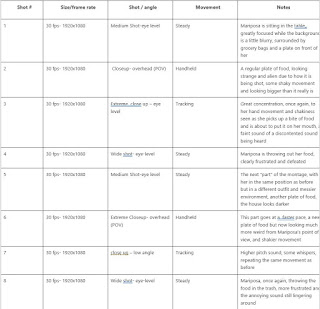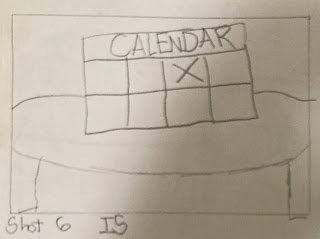It appears that the person that I had for Mariposa, she has not responded yet, so i will start making preparations for me to act as her replacement. Though i am frustrated and anxious about the change, I usually hate last minute changes, but I understand that we are all living through difficult times and has affected everyone hard, don't want to be seen as a nuisance to be pestering her to participate in the film if she does not feel comfortable. I also was expecting for this to happen, since I had not received a response from last week, so I already prepared myself mentally and, with some advice from others, set my camera in a way and cut the parts when I'm hitting record in post. In any case, I want to continue advancing with parts of my production, while I'm going to start recording on the weekend officially, I had made some advances in terms of props and other objects to have ready for my shooting days. Another part of my production that i can start in this moment are my diegetic and non-diegetic sounds, some that are not exactly playing in the recording but will be added later.
First, i want to test out how the audio recording from my phone actually sounds like, to not get with the surprise when the day comes and the audio sounds different than I expect. I want for most, if not all , of my audio to come from me, not rely on royalty free sound effects. But, if from this trial, it sounds bad, then it could take away from the tone of my film and change the experience, and i will have no choice but to search for alternatives. Before I make any radical decisions, I recorded myself as a trial, not any actual dialogue from my movie. This is the result:
It sounds really low, i recorded it while i was school. Either way, I think my audio recording is good enough for my short film. I did notice, in past recordings that i have, that there were a lot of echo, but i think that was due to the previous phone that I had and that i usually recorded it not considering the audio quality but the the content. I searched for some advice for recording in my phone, found an article. It was helpful to find some things that i can change to better the audio, which i already did, and i plan to install the app recommended: Voice Record Pro, to get it even better.
A part of my diegetic sound, dialogue, I have decided to record over and then add it in the editing process. That is the part of the phone call in the first scene, the one with the Dad on the phone. While i first considered to just record it as it was happening, then i remember that the actual echo of the conversation would be too high, having to put my Dad on another room, and then with the possibility of the both voices echoing each other, with causes high pitches in the scene, what i do not want to happen, as well as my phone audio being unable to pick it up. So, that is why i decided to record my Dad saying his lines, the lines for the phone call, then add the audio. I was looking for video editing software that will allow me to edit the audio to sound like a phone call, but i was unable to find a free option. iMovie seems to carry the option, but for their Mac devices, and i do not own one of them. Then, Premiere Pro is a pay for editing software. Luckily, I found an app called "Audacity", it is a free audio editing that lets you edit the audio only, but from there, i will export it into the film.
For the category of sound effects, non-diegetic sound, i want to include sharp high notes and distorted sounds, increasing in intensity and volume as the film progresses, representing how Mariposa's mind is getting clouded. Here is an example:
I will probably lower the pitch at first, then increasing it as the film goes on, the mental stability failing and how she cannot take it anymore. I will layer it with other disturbance sounds, as well as her own voice telling her what to do, externalizing her thoughts. I can achieve this sound in my own, just recording my sister's piano and changing the pitch and frequency later, as well as waiting for the refrigerator that we have, which is very loud, and record the noise it emits. Tonight i will start setting my house for when I wake up tomorrow, everything will be ready.Citations:
Nield, David. “How to Record Better Audio on Your Phone.” Popular Science, 30 Sept. 2018, www.popsci.com/record-better-smartphone-audio/.
Webb, Adam, director. EXTREMELY Painful Sound. Youtube, Mostannoyingsounds, 2012, www.youtube.com/watch?v=SEy_7dAFlqk.

















































